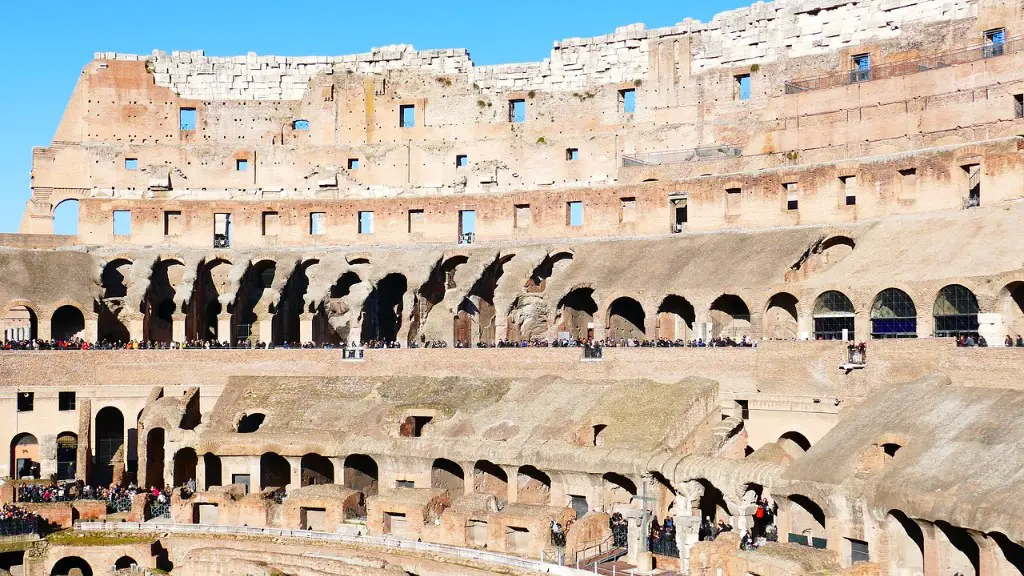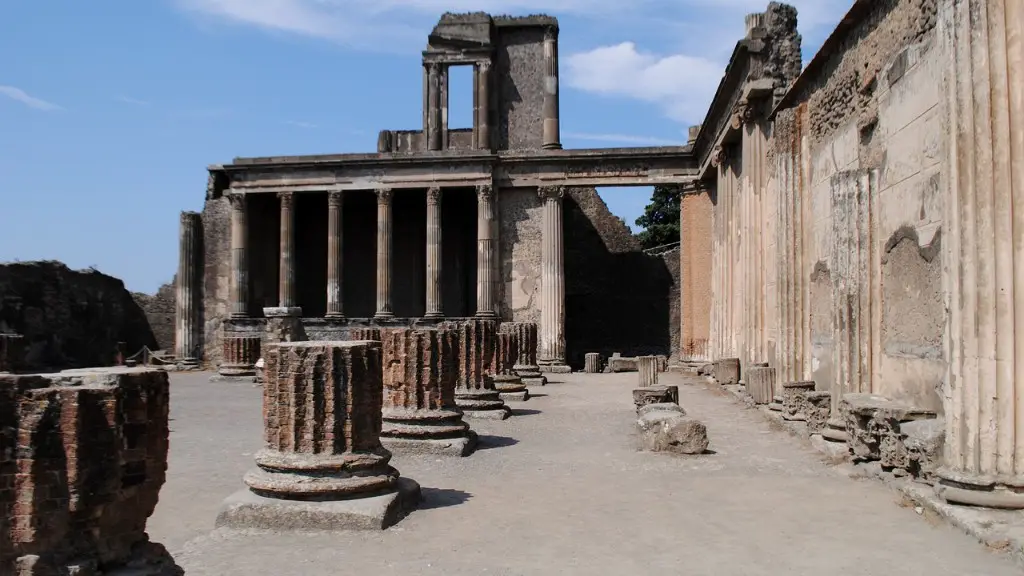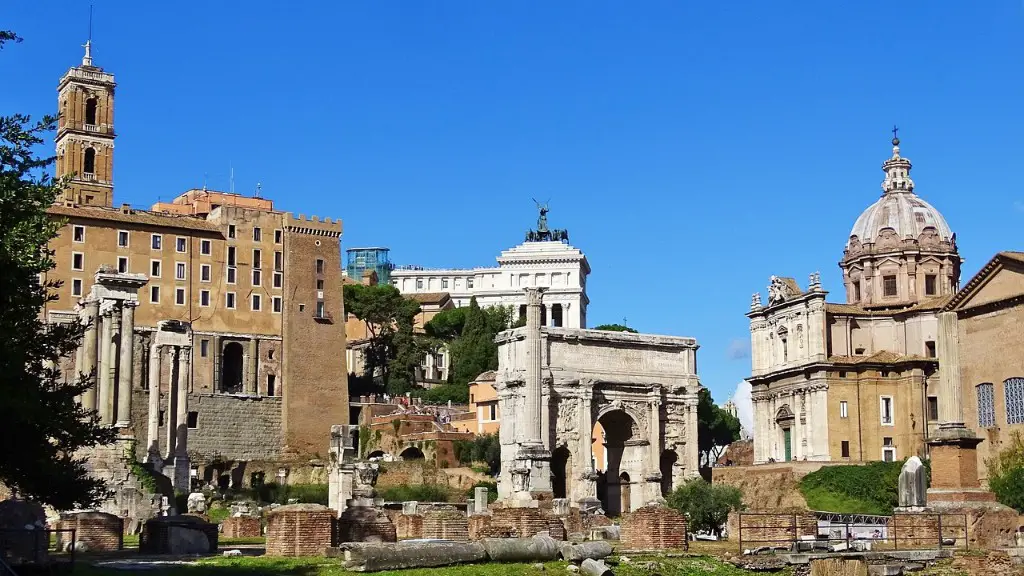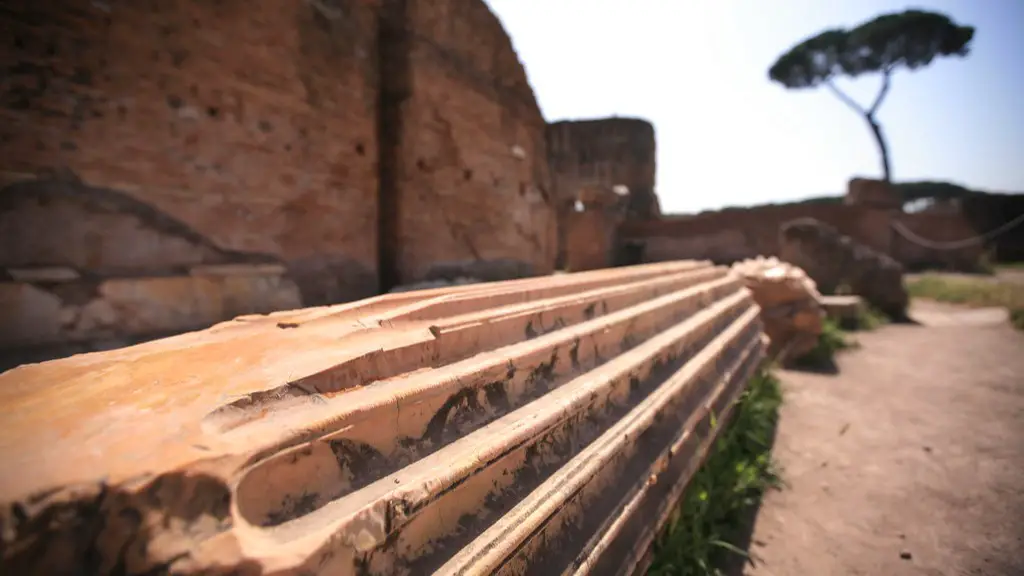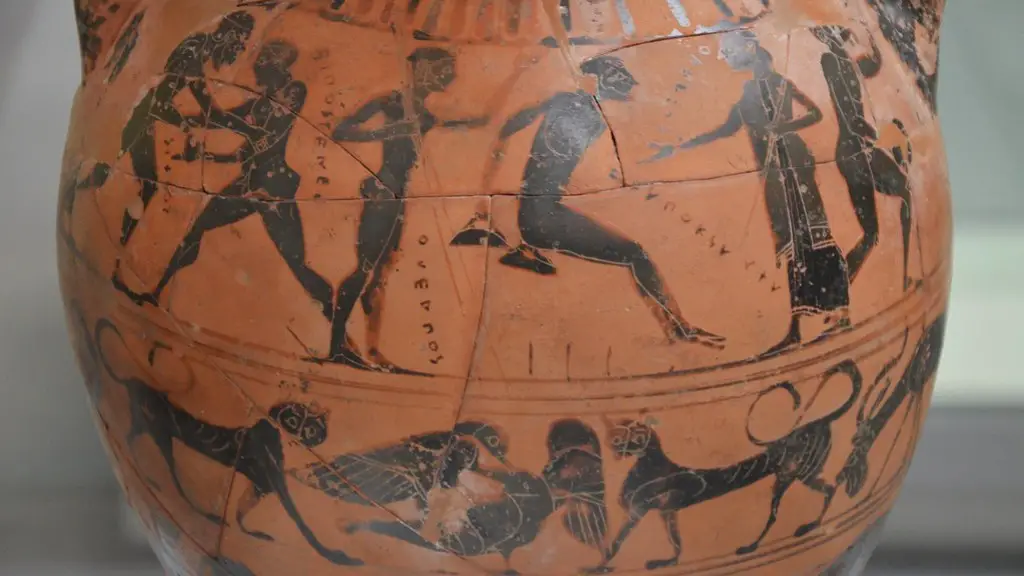There are a lot of ancient buildings in Rome, but one of the most famous is the Colosseum. The Colosseum is an oval shape and it’s huge! It was built about 2000 years ago and it was used for sports and entertainment.
The Colosseum of ancient Rome is an oval shape.
What shape was the Roman Colosseum?
The Roman Colosseum actually has an elliptical shape, which can be much harder to build than a circle. Why would the Romans choose an ellipse even though it was harder to build? Most likely because it enables them to build a stadium with more seats.
The elliptical architecture of an amphitheatre is meant to facilitate visibility from every seat in the arena. The Colosseum is a prime example of this, with its exterior facade consisting of four levels, the bottom three of which are composed of 80 arches each. This allows for an unobstructed view of the arena for all spectators.
What is the size and shape of the Colosseum
The Colosseum is an impressive feat of architecture and engineering. It is the largest amphitheater in the world and could seat up to 80,000 people. The oval shape of the Colosseum measures 189m long, 156m wide, and 50m high. It is made of stone and concrete and has a series of arches that support the weight of the structure. The Colosseum was used for a variety of entertainment, including gladiator fights, animal hunts, and public executions. It was also used for public events, such as speeches and plays. Today, the Colosseum is a popular tourist destination and a reminder of the Roman Empire’s grandeur.
The Colosseum was built in the first century AD, and was one of the largest amphitheatres of its time. It could seat up to 80,000 people, and was used for public events such as gladiator fights, animal hunts, and executions. The Colosseum was built of stone and concrete, and had a complex system of vaults and arches that helped to support its massive weight.
Is the Colosseum in good shape?
The Colosseum is an impressive example of Roman engineering and architecture. The fact that it is still standing after almost 2,000 years is testament to the strength of its construction. However, the building has suffered some damage over the years, due to earthquakes. The south side of the Colosseum is particularly vulnerable, and has seen the most damage. Fortunately, the rubble from the Colosseum has been used to build other churches and palaces across Rome, so its legacy continues.
The Roman amphitheater was the basis for the design of the modern stadium. The Colosseum, built in 80 AD, is still the standard by which all other stadiums are measured. Tim Cahill, architect of the NFL’s newest venue, Levi’s Stadium in Santa Clara, California, tells SI.com that his design was modeled after a “Roman amphitheater.”
Why is the Colosseum not flat?
The Colosseum is one of the most iconic Roman buildings, and is known for its colossal size and unique architecture. Interestingly, the Colosseum has no floor – it was removed in the 6th century after the last gladiator battles were staged. Before the basement was filled in with earth, the floor of the Colosseum was covered in sand, which absorbed blood and helped to prevent spectators from slipping. Today, the empty space beneath the Colosseum is open to visitors, and offers a fascinating glimpse into the history of this amazing structure.
The Colosseum’s use of arches to support the structure, the elliptical shape and the organizational system used to control the entry and exit of fans based on the location of their seats are staples of most modern stadiums. These features allow for a more efficient and aesthetically pleasing experience for both the athletes and the spectators.
What are 5 facts about the Colosseum
The Colosseum is one of the most iconic monuments of ancient Rome. It is over 1,900 years old and is famous for being the world’s largest amphitheater. Gladiatorial shows were held at the Colosseum and it is one of the New 7 Wonders of the World.
The Colosseum is a remarkable piece of architecture that was built with tarvetine stone and held together with iron clamps. It was able to accommodate 50,000 people and was a shell structure because of its curved, hollow shape.
Can you identify 3 facts about the Colosseum?
The Colosseum was a huge amphitheater built in Rome, and it was used for gladiator fights and public spectacles. Construction started in 72 AD, and the first gladiator fight was held in 80 AD. The Colosseum could fit 50,000-80,000 people at any given time, and it was built on a man-made lake.
An amphitheatre is a large, circular or oval performance space, typically used for outdoor concerts, plays, or sporting events. The word amphitheatre comes from the Greek word amphitheatron, meaning “theatre in the round”.
Was the Colosseum fully round
The Colosseum is one of the most iconic buildings in the world and it is no surprise that it is one of the most popular tourist destinations in Rome. The Colosseum is an elliptical amphitheatre that was built in 80AD. The amphitheatre could hold up to 80,000 spectators and was used for a variety of entertainment, such as gladiator fights, public executions, and animal hunts. The Colosseum was built in just 10 years and is a truly impressive feat of engineering.
The Pantheon was built in AD 126-128 by the Emperor Hadrian. It is a cylindrical building with a portico of large granite Corinthian columns. The height to the oculus (open skylight) and the diameter of the interior circle are the same, 43.3 metres (142 ft). It is one of the best-preserved of all Ancient Roman buildings, in large part because it was converted into a church in the 7th century AD and has been in continuous use ever since.
Why is there no roof on the Colosseum?
The Velarium was a large awning that covered the interior of the Colosseum. It was supported by poles and was believed to have covered about 30% of the interior of the Colosseum. The Velarium provided shade and protection from the sun and weather for the spectators. It is thought that the Velarium was not placed over the entire Colosseum because the poles could not have supported the weight of the fabric and because the walls of the Colosseum provided some shade.
The Colosseum is a massive stone structure that was built using a number of arches to keep the weight down. The four levels of the Colosseum were carefully controlled as to who could enter each one. The stairs were the only way to access the different levels.
Final Words
The Colosseum of Ancient Rome is in the shape of an oval.
The Colosseum of ancient Rome is most likely an elliptical shape.
